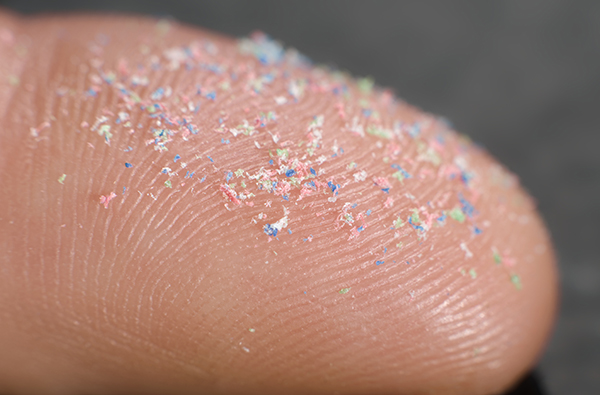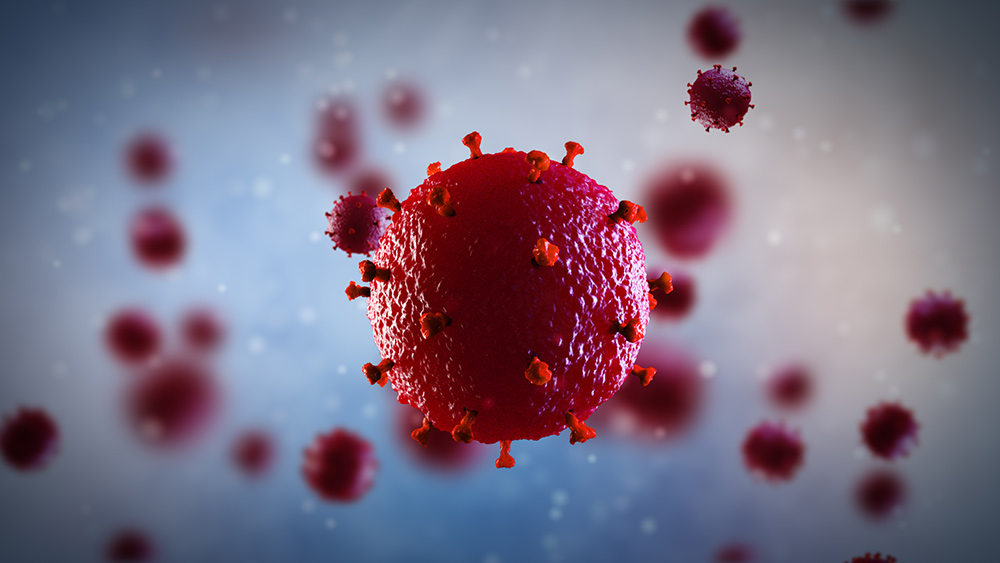MICROPLASTIC INVASION: Researchers find microplastics in human heart tissue
10/12/2023 / By Evangelyn Rodriguez

Microplastic pollution is a growing issue globally because of its negative effects on the environment, especially marine animals. These tiny plastic fragments persist in nature and have been shown to cause deleterious changes in fish and other ocean inhabitants when ingested, often resulting in their death.
Microplastics can also absorb harmful pollutants from the environment which they can transfer to the human food chain. Aside from contaminating seafood, microplastics enter the human body via plant- and animal-based foods, plastic food packaging and everyday products that contain or are made of plastic.
Over the years, studies have warned that microplastics can accumulate in human tissues and cause serious health problems, such as gastrointestinal disorders, immune and respiratory issues, chromosomal alterations and infertility.
More recently, alarming reports from around the world have emerged with direct evidence of the presence of microplastics in human blood samples and even in the hearts of cardiac surgery patients.
Microplastics circulate in the human body
In a 2022 study published in the journal Environment International, researchers from the Netherlands successfully identified and quantified plastic polymers in blood samples taken from 22 healthy volunteers. They were testing a new sampling and analytical method which they developed specifically to measure plastic particles at least 700 nanometers in size in human blood.
Their analysis showed that “plastic particles are bioavailable for uptake into the human bloodstream,” with polyethylene terephthalate (PET), polyethylene (PE) and various polymers of styrene having the highest concentrations in the blood samples. The maximum concentrations measured for PET, PE and polystyrene (PS) in the blood samples were 2.4 micrograms (mcg)/milliliter (mL), 7.1 mcg/mL and 4.8 mcg/mL, respectively.
PE and PET are industrial plastics commonly used for packaging (e.g., plastic bags, films and bottles), while styrene polymers like PS can be found in medical products, electronics, food packaging and common household products. It should be noted that while research on the health risks associated with microplastics are limited, the presence of microplastics in human blood could be damaging to healthy tissues and organs, if studies on animals are anything to go by.
An earlier study reported that microplastics can “latch onto the outer membranes of red blood cells” and interfere with their ability to transport oxygen to vital organs. Meanwhile, studies on mice suggest that microplastics in the bloodstream could also breach the blood-brain-barrier and potentially increase a person’s risk of developing neurodegenerative disease. (Related: Study: Microplastics accumulate in the brain and cause behavioral changes associated with dementia.)
A recent study using cells derived from the human brain confirmed this risk, noting that weathered microplastics produced from the breakdown of microplastics in the environment by wind and ultraviolet light, can increase the activation of brain immune cells (microglial cells) and pathways that lead to neurodegeneration. Overactivation of microglial cells triggers severe brain inflammation, which is said to play a crucial role in the development and progression of neurodegenerative diseases like Alzheimer’s and Parkinson’s.
Microplastics are infiltrating human organs
Aside from the brain, the heart and its surrounding tissues are also in danger of sustaining damage due to the presence of microplastics. In a study published in the journal Environmental Science & Technology, Chinese researchers reported detecting various microplastics in heart tissue samples collected from 15 cardiac surgery patients.
The tissues sampled included the pericardium, the membrane enclosing the heart; the epicardial adipose tissue, which is the fat depot located between the pericardium and the myocardium; the myocardium, or the cardiac muscle; the pericardial adipose tissue, the fat depot located outside the pericardium; and the left atrial appendage, an ear-shaped outpouching of the muscular wall of the left atrium that receives oxygenized blood.
The researchers found nine types of microplastics across the five types of heart tissue they collected, with the largest measuring 469 micrometers in diameter. They also detected nine types of microplastics with a maximum diameter of 184 micrometers in blood samples taken from the patients before and after cardiac surgery. (Related: Microplastics are EVERYWHERE: Yes, even in your gut and the food you eat, warn scientists.)
The researchers noted that the type and diameter distribution of microplastics in the blood samples varied before and after surgery, suggesting that some of the microplastics may have entered the patients’ bloodstreams during their operations. The researchers believe these microplastics came directly from the air in the operating rooms, citing previous research that reported the same happening.
On the other hand, they detected the presence of polymethyl methacrylate (PMMA), a transparent plastic used in car windows and smartphone screens, in samples taken from the left atrial appendage, epicardial adipose tissue and pericardial adipose tissue. The presence of PMMA in the samples cannot be attributed to accidental exposure during surgery, hence it provides “direct evidence of microplastics in patients undergoing cardiac surgery.”
“The detection of microplastics in vivo [in the living body] is alarming, and more studies are necessary to investigate how the microparticles enter the cardiac tissues and the potential effects of microplastics on long-term prognosis after cardiac surgery,” the study authors wrote in their report.
Although the present study is the first to report microplastics in the human heart, this is not the first instance researchers have found microplastics in a human organ. An earlier study published in the journal Science of The Total Environment reported finding airborne microplastics in human lung tissue samples. British researchers collected the samples from patients undergoing surgical resection for cancer or lung volume reduction surgery.
Using advanced infrared spectroscopy, the researchers identified 39 microplastics in 11 of the 13 lung tissue samples they analyzed. They noted that PET, resin and polypropylene, a commonly used thermoplastic, were the most abundant plastic polymers in the lungs of lung patients. Their findings prove that apart from ingestion, microplastics can also enter the human body via inhalation and accumulate in the lungs. Exposure to occupational levels of airborne microplastics in industrial settings has been shown to cause respiratory symptoms and disease.
Find more stories about the dangers of microplastics at Microplastics.news.
Watch the following video to learn more about the disturbing discovery of microplastics inside the human body.
This video is from the Daily Videos channel on Brighteon.com.
More related news:
Are microplastics invading the male reproductive system?
Microplastics alter the shape of human lung cells, warn scientists.
Microplastics pick up pollution, making them even more toxic to humans.
Microplastics are everywhere, including in New Zealand’s rainfall.
Sources include:
Submit a correction >>
Tagged Under:
bloodstream, brain health, dangerous, discoveries, ecology, environment, heart health, lung health, microplastics, poison, real investigations, research, respiratory health, toxic chemicals, toxic ingredients, toxins
This article may contain statements that reflect the opinion of the author
RECENT NEWS & ARTICLES
COPYRIGHT © 2019 Dangerous.News
All content posted on this site is protected under Free Speech. Dangerous.News is not responsible for content written by contributing authors. The information on this site is provided for educational and entertainment purposes only. It is not intended as a substitute for professional advice of any kind. Dangerous.News assumes no responsibility for the use or misuse of this material. All trademarks, registered trademarks and service marks mentioned on this site are the property of their respective owners.



















